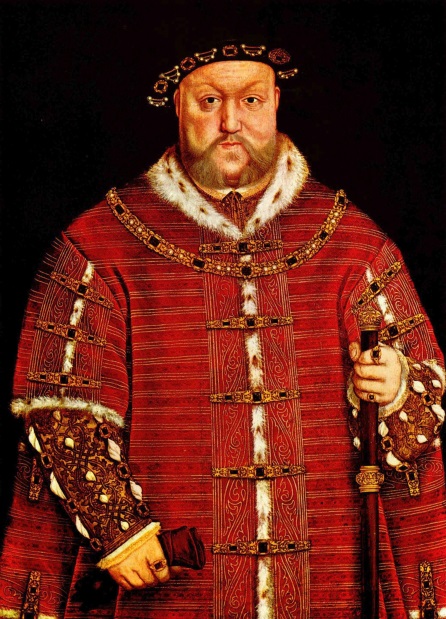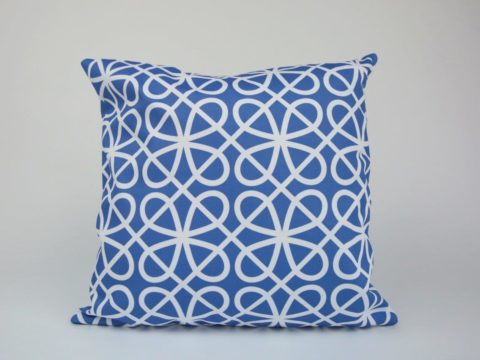Katherine Parr: Life Story
Chapter 6 : Queen of England (1543 - 1547)
Katherine set about the business of being Queen with great aplomb. During the first year or two, it was clear that Henry doted on her, lavishing her with gifts of clothes and jewels (many of which had belonged to Katheryn Howard) as well as settling an impressive jointure on her.
She ordered clothes and shoes (some 43 pairs in a variety of sumptuous materials), perfumes, beautiful furnishings and jewels. She had her greyhounds fed on milk and her parrot fed on hempseed.
Porter interprets this creation of a materially beautiful setting as Katherine striving to keep Henry’s physical interest in her strong, particularly the orders for herbs and flowers. James’ view inclines more to the idea that the herbs and flowers were to hide the stench from Henry’s diseased leg, and that the dresses and jewels were rather in the way of a consolation prize. On a more domestic note, Katherine had a spaniel, named Rig, which sported a crimson velvet collar, studded with gold.
For the first eighteen months of her marriage, Katherine rode high. She was praised on all sides, and described by a Spanish visitor to court in 1544:
“The Queen has a lively and pleasing appearance and is praised as a virtuous woman.”
Foreign ambassadors also noted her gracious behaviour towards the Lady Mary, who now lived at Court with her, and her pious and well-regulated household. They also reported that the Queen loved to dance and enjoyed music and that the King continued to dote on her.

The culmination of this period of marital bliss came in 1544 when Henry appointed Katherine as Regent whilst he embarked on another of his fantastical forays into France, hoping to emulate Henry V. Katherine was to rule, aided by a Regency Council – this mark of respect shows clearly that Henry cherished and respected Katherine and relied on her loyalty and sense, as he had on that of his first Queen, thirty years before, when sallying into France.
Katherine lived up to his expectations and showed herself a competent and sensible manager – overriding the Council where she felt it was required, but carefully deferring decisions that were too contentious to Henry.
Perhaps this brief period of power went to her head a little, as, after Henry’s return, she began to become more involved in questions of religion in a time when to contradict the King’s views (which seem to have veered back and forth between Catholicism without the Pope, and a mildly Lutheran interpretation of Humanism) could quickly send a man to the gibbet as a Catholic traitor, or the fire as a heretic.
Henry had always enjoyed religious disputation, even before the divorce proceedings of the 1520s and he and Katherine obviously discussed religion frequently. Perhaps it was these conversations that led her to ponder matters more deeply, or perhaps the seeds of reform had been sown in her mind long before in Lincolnshire.
Whatever the basis for her interest, Katherine became more and more drawn to reform, seeming to move beyond the Lutheran position of most of the reformers at Henry’s court, towards Calvinism. She wrote various prayers, including one for “men to say on entering into battle” that was probably created for Henry’s French campaign in 1544. She also probably undertook the translation of Bishop Fisher of Rochester’s Psalms and Prayers taken out of Holy Scripture, which translation was published in 1544 by the King’s Printer. The first publication of her own creation was Prayers or Meditations in 1545.
Not content with translation and writing, Katherine began to involve herself more directly in religious matters, intervening in a case brought to the Court of Alderman in London, in which the widower of one of her servants was charged with voicing heretical opinions and printing radical books. Unfortunately, however, Katherine had enemies – perhaps not so much of her personally, as of her increasingly well-known move towards radical religion. The conservative faction at court, led by Stephen Gardiner, Bishop of Winchester, was determined to keep Henry from the clutches of the Protestants, and, as the king grew older, more paranoid and more irascible, the conservatives plotted to remove his dangerously reformist Queen.
The conservatives had a turn in their luck when Katherine played into their hands by arguing too vigorously with Henry in early 1546. He had obviously become tired of her growing inclination to preach to him, and, when she left the room he allegedly complained to Gardiner that
“It was a good hearing when women become such clerks and a thing much to my comfort to come in mine old days to be taught by my wife.”
Gardiner leapt at the opening and received Henry’s permission to investigate Katherine for heresy. Investigations were made into some of the young men at Court who were accused of “disputing indiscreetly of scripture”, allegedly during discussions in the Queen’s household. The crux of the investigation, however, soon centred around Katherine’s supposed relationship with a young Lincolnshire woman, named Anne Askew.
Anne Askew, a young woman of around 25 years old, and a native of Lincolnshire, was one of the most radical, and bravest religious martyrs of the age. By 1546, she was becoming notorious for her evangelical faith, and her inability to keep quiet about it. She was interrogated in front of the Lord Mayor about her beliefs, and arraigned for heresy. Owing to lack of witnesses she was released, but, failing to be warned, Askew, would not, or could not keep her views to herself. She was again arraigned for heresy in June 1546, and now, the conservative councillors saw their chance.
The ladies of Queen Katherine’s household, including Anne, Countess of Hertford, Katherine Willoughby, Duchess of Suffolk and Joan Champernowne, Lady Denny were suspected of supporting Askew, not just with money for her maintenance in gaol, which Anne admitted, but in her opinions. Gardiner and his cohorts were determined to find a link between Askew and the Queen which would send Katherine to the flames.
Shocking even to the hardened courtiers of Henry VIII, Anne was tortured on the rack, with the Lord Chancellor, Wriothesley, and Sir Richard Rich personally turning the wheel to try to force her to confess to support from the Queen. Askew defied them all. She refused to incriminate anyone else and was burnt, maintaining her religion to the end.
Undaunted, Gardiner told Henry that the king was “cherish(ing) a viper in his bosom” and that he would provide proof of Katherine’s heresy. Henry agreed that the Queen could be arrested and investigated.
Somehow, Katherine got wind of what was in store, probably through her doctor. It seems likely that Henry himself had told the doctor, presumably with the intent that Katherine should hear about it. It was not the first time Henry had allowed action to be taken against one his favourites, only for the accusers to find themselves foiled at the last minute. Katherine reacted with predictable terror. She fell into a serious state of panic and grief. Henry, hearing of this, visited her and, having heard that she was worried she had displeased him, comforted her.
All was not complete, however. The next day, speedily recovered, Katherine visited Henry. He began to draw her into controversial topics, but Katherine had rapidly learnt her lesson. She declined to dispute, saying that she was only a “silly woman” who desired to learn from her husband. On him taxing her with the suggestion that “she was become a Doctor to instruct us and not…to be instructed or directed by us” she immediately was all contrition and claimed that he had misunderstood. She only argued to take his thoughts off his recent illness, and so that she might learn from him.
Henry was clearly fond of Katherine, and perhaps was mindful of the idea that disposing of yet another wife would make him a laughing-stock. Perhaps too, he wanted the domestic peace and harmony that she had given to his family to continue. Whether he was really convinced that she had no heretical leanings must be a moot point. He was no fool, and had heard enough flattery in his life to recognise it. Nevertheless, he affected to believe her, declaring that they were “perfect friends again.”
From this time on, Katherine’s political influence seems to have diminished. Henry continued to cosset her, but she was careful to play the part of the obedient wife.The change in their relationship can perhaps be seen in the contents of Henry’s final Will. In his Will of 1544, Katherine was named as Regent for the Prince Edward, should Henry not return from France, but by late 1546 he had drawn up a new Will, with no mention of Katherine as Regent, but provision for a Regency Council.
During the last months of 1546 Katherine spent some time with Henry, but at Christmas of that year they parted, she to spend Christmas at Greenwich with her step-daughter Mary, and he at Hampton Court with only a few of his closest Councillors. She had never been parted from him at Christmas before, and perhaps knew that this heralded the end.
On 28th January 1547, Henry died. It is unlikely that Katherine was present during his final days.
Katherine Parr
Family Tree




